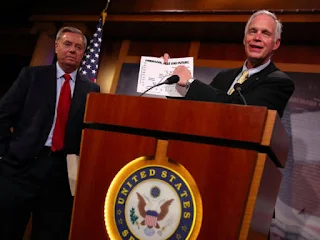Cassidy, be that as it may, is one of only a handful couple of who feel along these lines. Numerous in the medicinal services group - specialists, doctor's facilities and approach specialists - say it's progressively an issue of what number of individuals will lose their protection.
The Congressional Budget Office still can't seem to discharge its assessment of the bill Cassidy co-composed with Senator Lindsey Graham of South Carolina. Its surveys of prior GOP charges in the House and Senate found that no less than 22 million less individuals would have scope by 2026, contrasted with current law.
It's hard to state precisely what the scope misfortunes would be under the Graham-Cassidy charge, specialists say. That is generally on the grounds that it would give a ton of control over medicinal services to the states, while in the meantime shortening government financing. Their choices will influence what number of their inhabitants have scope.
Here's the means by which it would work: The enactment would wipe out Obamacare's Medicaid development, and in addition government premium and cost-sharing endowments to purchase approaches on the trades. Rather, states would get a pot of cash through 2026, and it would be dependent upon them to make sense of how to spend it on social insurance.
Promoting
inRead designed by Teads
Be that as it may, that pot would be littler than it would be under Obamacare - by $107 billion, as per the Kaiser Family Foundation. Additionally, the cash would be redistributed such a significant number of states that extended Medicaid - which saw the best scope increases under the wellbeing change law - would lose some of their financing, while those that didn't grow would get more.
Additionally, similar to the earlier GOP endeavors, the Graham-Cassidy bill would take out the individual command. That by itself would bring about around 15 million less protected Americans one year from now, CBO says.
The bill would likewise recoil government support of Medicaid by sending states a set measure of assets per enrollee or a single amount - once more, surrendering it over to governors and administrators to choose how to utilize the cash. A for every enrollee top would cut government spending by $53 billion in the vicinity of 2020 and 2026, contrasted with current law, Kaiser found.
Most states, be that as it may, don't have the fortitude to compensate for any shortfall so it's conceivable they'll fix enlistment, diminish advantages or trim supplier rates.
"The adaptability states will be given under the bill is the place to cut, the amount to slice and who to cut," said Sabrina Corlette, investigate teacher at Georgetown University's Health Policy Institute. "You can't remove that much cash from the framework and anticipate that more individuals will keep on getting reasonable scope. It simply doesn't make any sense."
